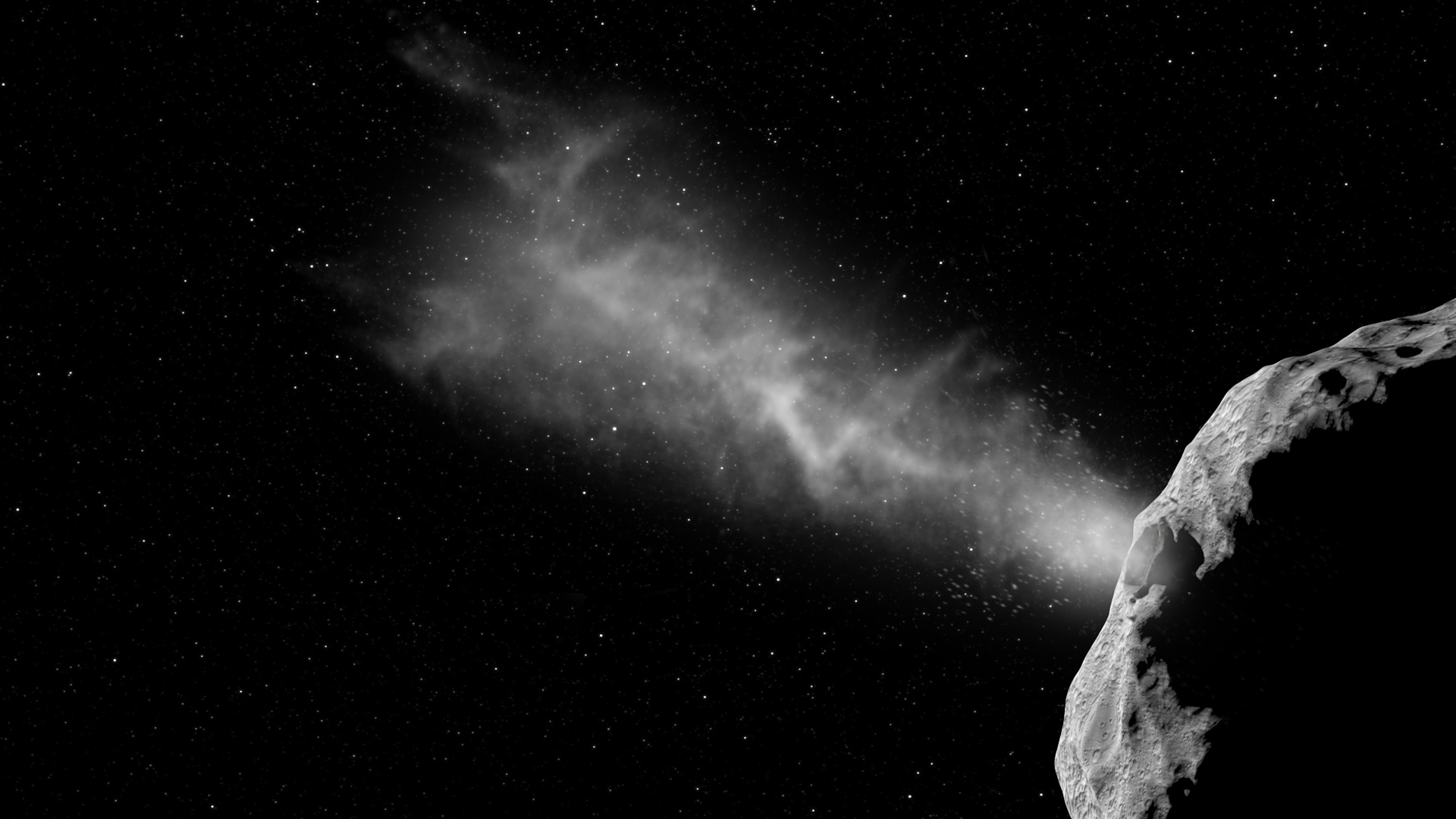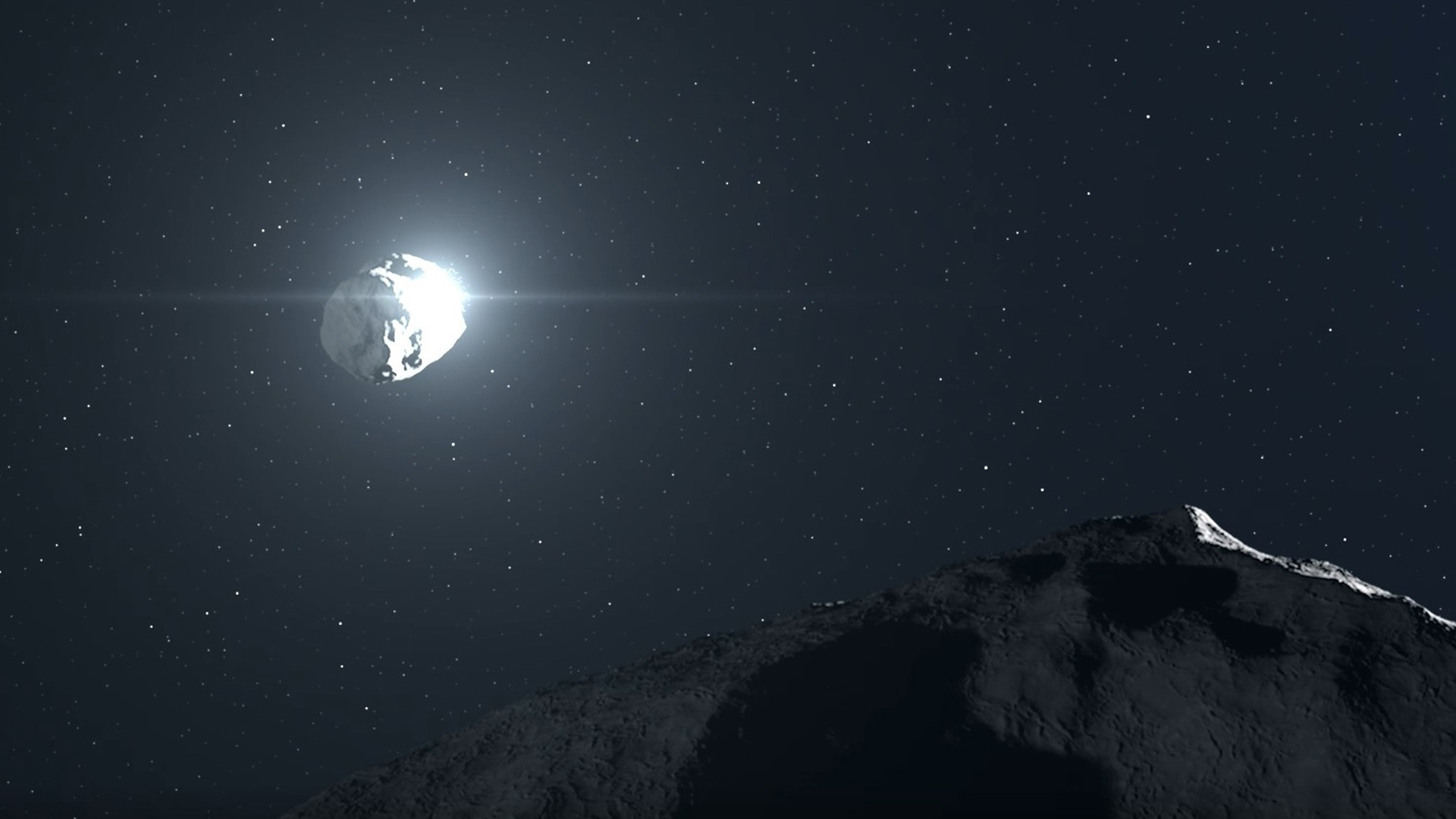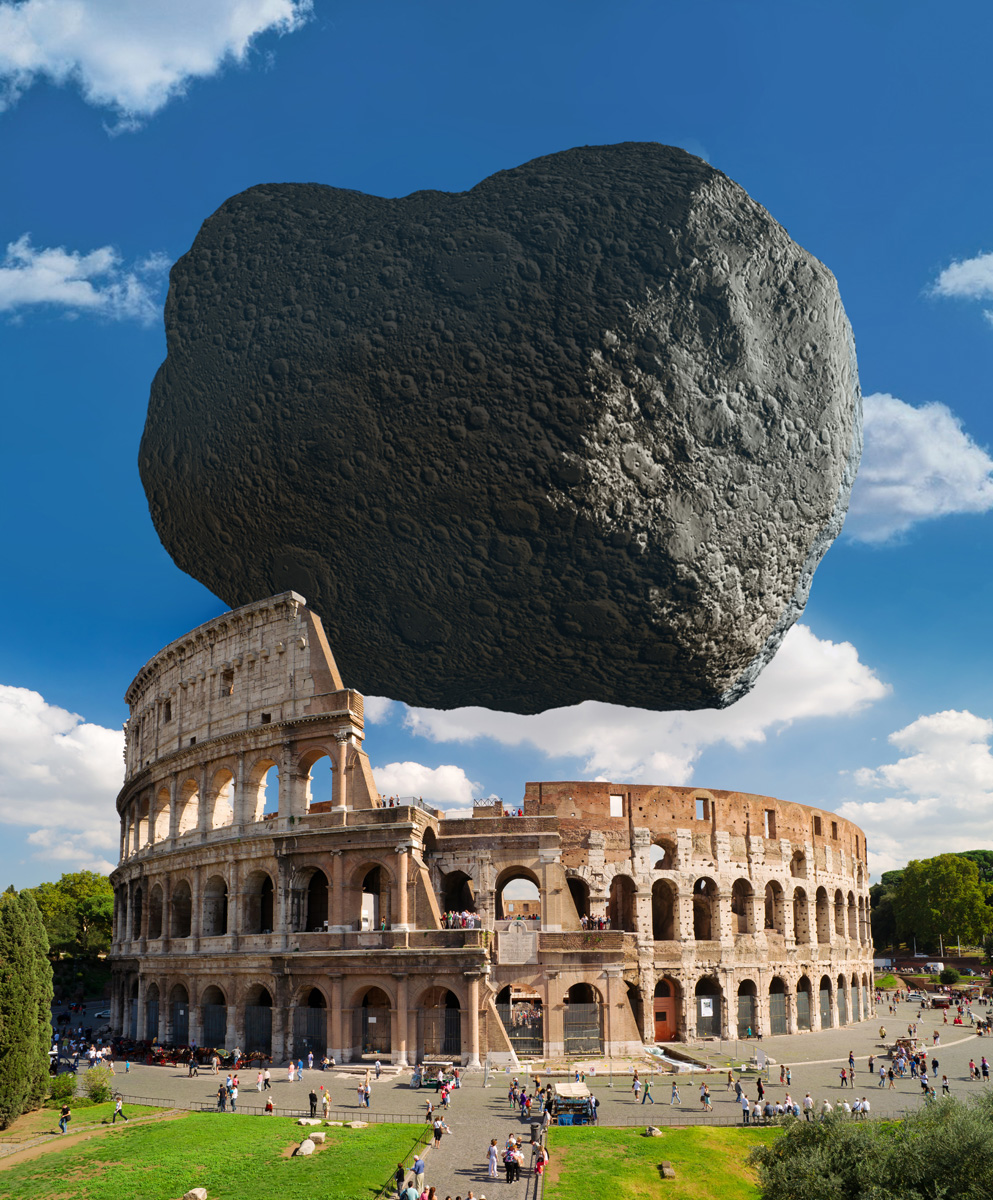NASA's DART asteroid crash is a rare opportunity for space-rock scientists
Dimorphos will be only the sixth asteroid we will have seen up close.

Before NASA's planetary defense probe DART self-destructs by slamming into the asteroid Dimorphos next week, it will offer views of only the sixth asteroid we will have ever seen up close.
Scientists are eager to get their hands on those images, as they admit that we know extremely little about the space rocks potentially threatening Earth.
Missions to asteroids are full of surprises. Almost two years before the Sept. 26 DART collision, NASA learned first-hand how unpredictable these space rocks can be when the OSIRIS-REx mission touched down briefly on asteroid Bennu to collect a sample. Against all expectations, the boulder-strewn surface of the 0.3-mile-wide (0.5 kilometers) asteroid was so soft that it nearly swallowed up the probe, sending shivers down the spacecraft controllers' spines and an enormous wall of debris up into space. With DART (short for "Double Asteroid Redirection Test"), NASA has sent a spacecraft to change the orbit of an asteroid, about which scientists know as little as they knew about Bennu before OSIRIS-REx's encounter.
"DART is going to be our first mission to study up close a binary asteroid system," Terik Daly, a deputy instrument scientist on DART's Didymos Reconnaissance and Asteroid Camera for Optical navigation (DRACO), and a planetary scientist at Johns Hopkins Applied Physics Laboratory, which manages the DART mission for NASA, told Space.com.
Related: What time will NASA's DART probe hit an asteroid on Sept. 26?
More: DART asteroid-impact is a key test of planetary defense
The sixth space rock ever seen in detail
DART is aiming for the 520-foot-wide (160 meters) asteroid Dimorphos, which is orbiting a larger, 2,560-foot-wide (780 m) asteroid called Didymos. From ground-based measurements, scientists know the speed at which Dimorphos orbits Didymos and have a rough idea about the larger asteroid's chemical composition. Dimorphos, DART's ultimate target, however, is a complete unknown.
"Dimorphos is small enough that it hasn't actually been studied separately from Didymos in any great detail," Daly said. "We know that it's a separate body, but we know very little about the shape. We don't know if Dimorphos is elongated or spherical; we don't know whether it's a single rock or a pile of boulders."
Get the Space.com Newsletter
Breaking space news, the latest updates on rocket launches, skywatching events and more!
Thanks to the DART mission, Dimorphos will become one of the best-studied asteroids in the universe, joining the OSIRIS-REx target asteroid Bennu, the Itokawa and Ryugu asteroids visited by the Japanese missions Hayabusa 1 and Hayabusa 2 and the Eros asteroid, which was explored by NASA's NEAR Shoemaker probe in the early 2000s. Dimorphos and Didymos will become only the sixth and seventh space rock ever seen up close by a spacecraft, and that is out of more than 26,000 asteroids currently known to regularly approach Earth's orbit. In addition to the four above, the asteroid Toutatis was briefly visited by the Chinese Chang'e 2 lunar probe, which took several images of it in 2012.

Unpredictable collision effects
Before DART slams into the surface of Dimorphos at a mind-boggling speed of 13,680 mph (22,015 kph), the spacecraft will be transmitting images of the asteroid, captured by its DRACO camera, at the rate of one per second. At first, the camera will see both asteroids, then it will focus on Dimorphos, guiding DART toward it. As DART hurtles toward the smaller space rock, the views will become more and more detailed until the transmission abruptly stops — the moment of the collision.
An Italy-built cubesat called LICIACube, which traveled as a passenger on DART but was released 11 days before the impact, will observe the crash from a safe distance of 600 miles (1,000 km), then zoom toward the freshly scarred surface to explore the impact in detail.
Because scientists know so little about Dimorphos, they have no idea how the rock will respond to DART's attack. Will the asteroid be as soft as Bennu and swallow up DART like a swamp, or will it be a solid piece of rock that will completely flatten the van-sized DART? Asteroids are so small and their gravity so feeble that even seeing the rock from above doesn't help predict the impact effect.
"Images can be deceiving, and unless you touch [the asteroid], you don't know," Patrick Michel, the principal investigator of the European Space Agency's (ESA) planned Hera mission, which will visit Dimorphos and Didymos in 2027 to conclude the investigation of the impact aftermath, said in a ESA news conference on Sept. 15.
"The reason is that you are in a very very low gravity environment," added Michel, a planetary scientist at the Cote d’Azur University in France."And the response of the surface is sometimes totally counterintuitive because our intuition is based on what we experience on Earth."

What is Dimorphos made of?
Based on how Didymos, the larger of the two rocks, reflects light, astronomers think the asteroid is mostly made of silicate-rich rocks, unlike Bennu, which is made of a less dense carbon-rich material.
If Dimorphos is made of the same material as its bigger buddy, and the assumptions are correct, then the collision with DART will be less messy and possibly less efficient in changing Dimorphos' orbit than it would be if the asteroid were softer, Daly said. To know for sure, however, we will have to wait for LICIACube's data.
The cubesat will also make a flyby around Dimorphos and view the entire asteroid to allow scientists to reconstruct its shape. It will take weeks to months, however, to download all the data and reveal Dimorphos' secrets.
How do binary asteroids form?
Since the Didymos-Dimorphos duo is the first binary asteroid to be studied in detail, scientists hope to learn something about how these space-rock couples form, said Daly. According to estimates, about 16% of near Earth asteroids wider than 650 feet (200 m) may be binaries. Even asteroid triplets are known to exist. According to some theories, such asteroid families might form when a larger rock starts to spin very fast, shedding some of its material in the process, said Daly. Other theories suggest that the binaries and triplets may be produced in collisions.
"And one of the things we'll be able to do with the DART mission is to look at what Didymos looks like in images and what Dimorphos looks like in images," said Daly. "And if they look similar — if their brightness is very similar, if they have similar kinds of morphologies — that would suggest that maybe Didymos and Dimorphos did sort of split apart. If it turns out that we look at Didymos and it looks more like Bennu but Dimorphos looks like a single rock in space, then maybe this division approach doesn't make sense."
Asteroids are full of surprises, and seeing one doesn't mean we could predict the behavior of all the others. But learning as much as we can about Didymos and Dimorphos will help scientists make better guesses about other asteroids, said Daly. And the more we know, the better chance we have of getting things right when a dangerous space rock sets its sights on Earth.
Follow Tereza Pultarova on Twitter @TerezaPultarova. Follow us on Twitter @Spacedotcom and on Facebook.
Join our Space Forums to keep talking space on the latest missions, night sky and more! And if you have a news tip, correction or comment, let us know at: community@space.com.

Tereza is a London-based science and technology journalist, aspiring fiction writer and amateur gymnast. Originally from Prague, the Czech Republic, she spent the first seven years of her career working as a reporter, script-writer and presenter for various TV programmes of the Czech Public Service Television. She later took a career break to pursue further education and added a Master's in Science from the International Space University, France, to her Bachelor's in Journalism and Master's in Cultural Anthropology from Prague's Charles University. She worked as a reporter at the Engineering and Technology magazine, freelanced for a range of publications including Live Science, Space.com, Professional Engineering, Via Satellite and Space News and served as a maternity cover science editor at the European Space Agency.









